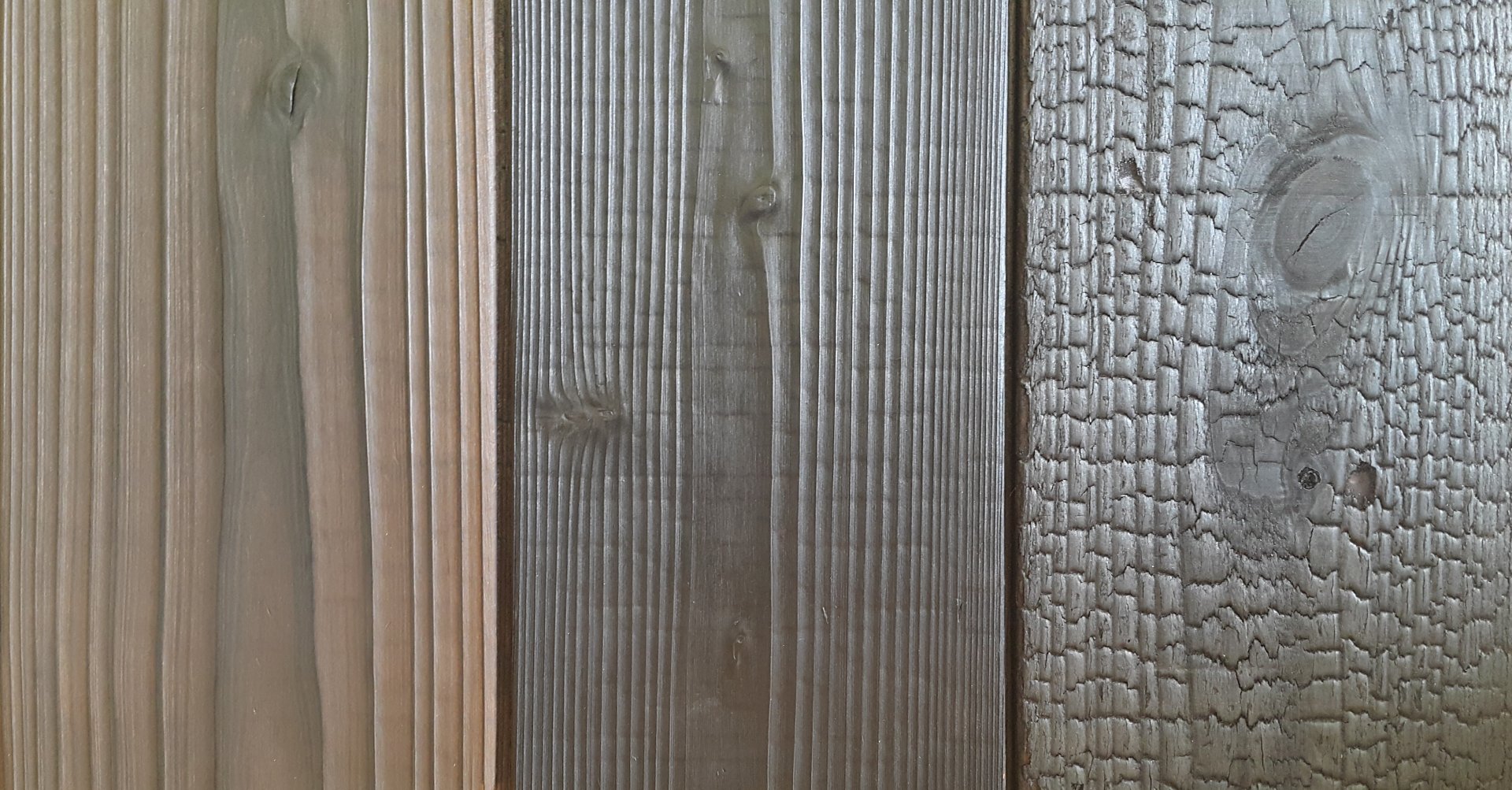ABOUT US
The Original ancient Japanese charring technique that preserves wood against rain, rot, fire and insect. This dark, tan and handsome wood is not only charming, but also durable which can last up for years.
The final product is a powerful statement with strong impression for siding applications that allow outstanding finish to stand out from the crowd. In the world of sustainable design, the use of natural resources is one of the best practices proven for centuries.
YAKISUGI from Timbercharm is an eco-friendly product with an emphasis on sustainable, affordable and inventive building design solutions.


How can YAKISUGI improve wood property?
Benefit #1 : Fire Resistant Property
YAKISUGI with charring technique can improve fire resistant of wood property. In fact there are many ways to prolong wood from catching fire. Liquid coatings or chemical treatments can be applied to achieve fire rating. But charring wood is one of the best ways to go. It's non toxic as well.
By burning wood surface for a short period of time with designated temperature, this can change wood property.
Naturally, wood structure has two main components, cellulose and lignin. Cellulose is soft compound that contain in fresh shoots and leaves. On the other hand, lignin is a complex organic polymers that form important structural materials in wood cell walls, providing the sturdy structure of plants. It lends rigidity and do not rot easily.
When wood is on fire, the soft cellulose gets burnt off, whereas lignin, the harder one, take longer time to burn. The outer wood surface transformed and acts as shield insulator. In short, once wood has been charred and become YAKISUGI, in order to reignite, it needs higher fire temperature with much longer time to do so.
Hence, the fire resistant property has been improved.
Benefit #2 : Pest Resistant Property
Just like fire property, the charring process gets rid of soft wood cellulose, turning it to char. Only thing left is the hard lignin. The nutrition in wood has gone, leaving less healthy food to pests, bugs, and termites. However, this doesn't mean it can be totally pest free. But the charred layer is now not healthy for pest to eat.
This increases pest resistant property.
Benefit #3 : Weather Resistant Property
When wood turns to char, it's property has changed, in many good ways. Wood surface becomes black colour. This means there is no need for painting or coating. It will last for years or decades with very minimum maintenance effort. It also can be coated with natural oil to maximize surface property and extend its life cycle.
This improves weather resistant property.
Benefit #4 : Dimensional Stability Property
In order to burn wood surface into char, it requires very high degree of fire temperature. Moisture content in wood will be dried out, leaving less percentage inside YAKISUGI when compare to new fresh wood.
Dimension stability has been improved.
YAKISUGI is not new. It has been tested with real severe weather conditions around the globe. Nowsaday, it's getting popular with modern design architectures. It can be used both exterior and interior decorations.
TIMBERCHARM supplies best YAKISUGI to your projects with affordable price.
GIVE US A CALL!
Cedar VS Pine
Cedar is one of the most durable soft woods especially for exterior applications due to its versatile properties. Cedar has natural rich reddish brown color and pleasant smell.
Cedar naturally contains preservatives and oil that work well against insects and termites. When compare to Pine, Cedar is different. With untreated pine, it is not naturally resistant to insects, rot or decay. Hence it requires chemical treatment. After installation, these chemicals vapors can be released over time.
Cedar is one of the driest wood with an average moisture content of only 19 - 23% before drying process. It's closed molecular structure prevents cedar from absorbing water. Normally air dried process is the best way to go. Pine, n the other hand, contains more water with an average moisture content of 50-55%. In order to remove moisture content, pine is kiln dried which forces the moisture out with high heat. After installation, pine wood will continue to dry and can crack, split, and shrinkage.
The summary table below will prove how Cedar is far better than Pine.

